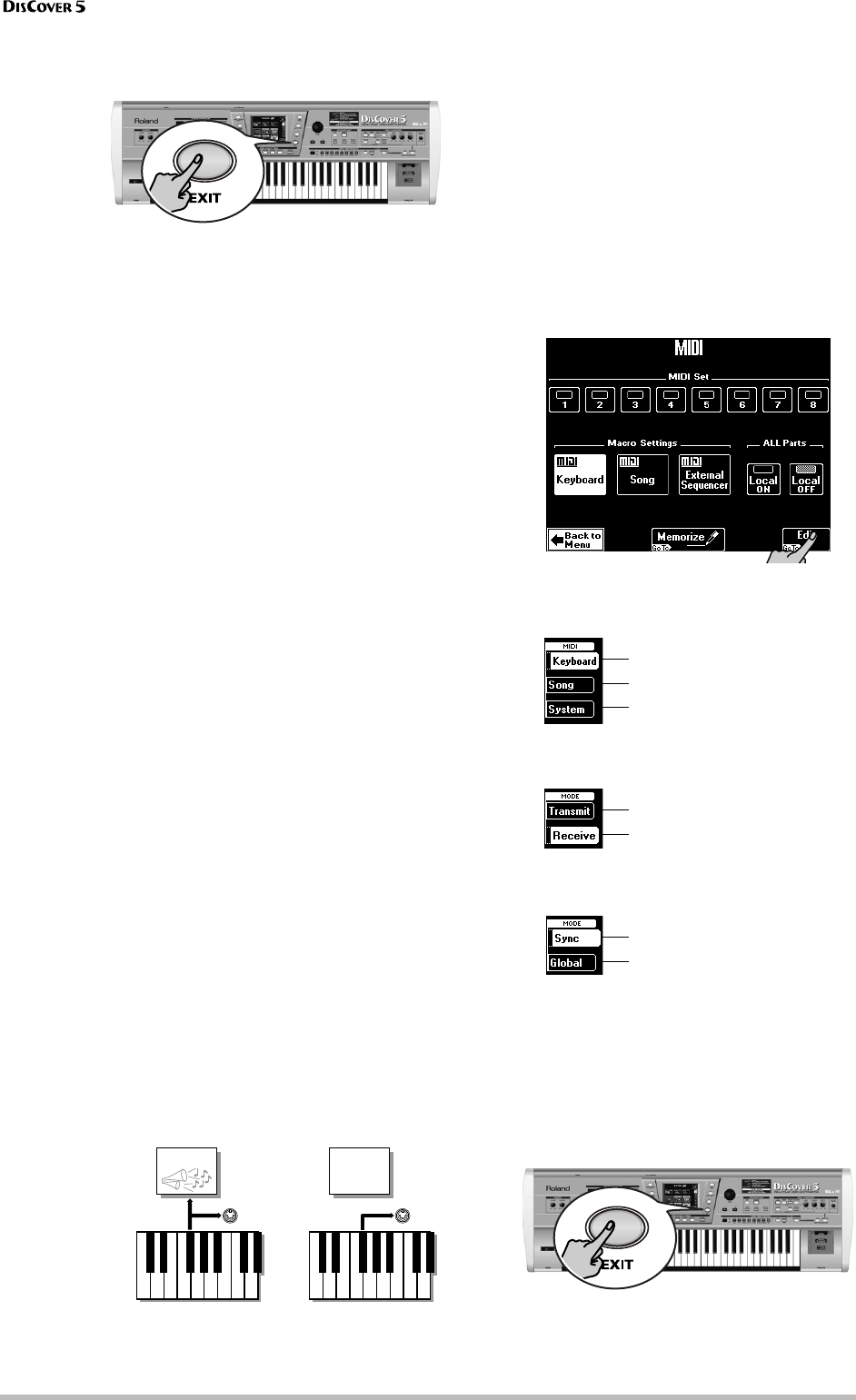
MIDI
100
r
(5) Press the [EXIT] button to return to the main
page.
Working with Macros
The opening “MIDI” page contains three big
fields with preset settings. All you need to do is
press them to restore the default settings for
the sections or aspects in question.
[Keyboard]: This field recalls the factory MIDI
settings for the Keyboard parts (Upper, Lower,
M.Drums). The most important (and practical)
use for this field is to set the MIDI transmit/
receive channels of the Keyboard parts and to
switch off MIDI transmission/reception of the
song parts.
Note: This field applies to both reception (RX) and
transmission (TX). The DisCover 5 indeed allows you to
set separate TX and RX channels for each part.
[Song]: This field restores the factory settings
for the DisCover 5’s song parts. It also switches
off the MIDI transmission and reception of the
Keyboard parts. You may not have noticed it so
far, but these are separate parts. Your
DisCover 5 is indeed 20-part multitimbral.
[External≈Sequencer]: Prepares your DisCover 5
for use (and synchronization) with an external
sequencer. The MIDI transmission of the Key-
board parts is switched on (they do not receive
MIDI data), while the MIDI reception of the
song parts is also activated (they do not trans-
mit MIDI messages).
All Parts [Local≈On]/[Local≈Off]: These settings
allow you to establish or remove the connec-
tion between the DisCover 5’s keyboard/Song
Player and the internal tone generator.
When set to [Local≈On] (default), playing on the
DisCover 5’s keyboard or playing back a song
will cause the corresponding notes to sound. If
you select [Local≈Off], the corresponding MIDI
messages are no longer sent to the internal
tone generator – but they are still transmitted
to the MIDI OUT port and hence to external
MIDI instruments.
As soon as you press one of these fields, the
number of the currently selected MIDI Set is
indicated with an asterisk (*) to signal that the
current settings no longer correspond to the
written settings. See p. 103 for details about
the MIDI Sets.
Editing procedure
After performing step (6) below, you will see a
display page that works as follows. In fact, it
uses the same system as the Vocal Harmonizer
(Menu) and the Disk Media environment.
(6) Press the [Edit] field on the first “MIDI” page.
(7) On the page that appears now, select the sec-
tion whose parameters you wish to edit (left
side):
(8) Select what you want to edit (for Keyboard
and Song):
If you press the [System] field (see step (7)), the
“MODE” options change:
(9) Use the [PREV] and [NEXT] buttons to select
the parameter you wish to edit, and set the
desired value with the [VALUE] dial.
Parameter fields can also be selected by press-
ing them.
(10) Press the [EXIT] button to return to the main
page.
MIDI OUT
LOCAL ON
LOCAL OFF
MIDI OUT
+SMF
+SMF
+SMF
+SMF
Sound source Sound source
Refers to the Keyboard parts
Refers to the parts of the Song Player
Synchronization, general settings
MIDI data transmission
MIDI data reception
Synchronization with other devices
Overall MIDI settings


















